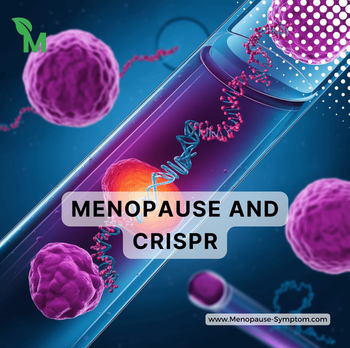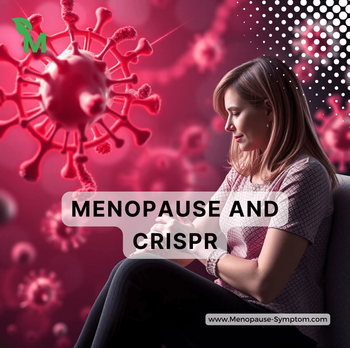The Changing Landscape of Menopause Management
Menopause, a natural biological process that marks the end of a woman's reproductive years, has long been a subject of intense scientific interest and medical research. As we stride into the 21st century, groundbreaking advancements in genetic engineering, particularly CRISPR technology, are opening up new possibilities for managing menopausal symptoms and potentially altering the course of this life stage. This blog post delves into the fascinating intersection of menopause and CRISPR, exploring how this cutting-edge technology could revolutionize women's health and well-being during this critical phase of life.
Understanding Menopause: More Than Just Hot Flashes
Before we dive into the potential applications of CRISPR in menopause management, it's crucial to understand what menopause entails. Menopause is not just a fleeting moment but a complex transition that can span several years. It typically occurs between the ages of 45 and 55, signaling the end of menstrual cycles and fertility.
The journey through menopause is unique for each woman, but common symptoms include:
Hot flashes and night sweats
Mood changes and irritability
Sleep disturbances
Vaginal dryness and discomfort
Loss of bone density
Changes in libido
Weight gain and slowed metabolism
These symptoms can significantly impact a woman's quality of life, both personally and professionally. While hormone replacement therapy (HRT) has been the go-to treatment for many years, it's not suitable for everyone and comes with its own set of risks and side effects. This is where CRISPR technology enters the picture, offering a potential paradigm shift in how we approach menopause management.
CRISPR: A Game-Changer in Genetic Engineering
CRISPR, which stands for Clustered Regularly Interspaced Short Palindromic Repeats, is a revolutionary gene-editing tool that has taken the scientific world by storm. It allows researchers to make precise changes to DNA sequences, potentially correcting genetic defects or introducing beneficial traits.
How CRISPR Works: A Simple Explanation
At its core, CRISPR functions like a highly precise pair of genetic scissors. It can locate specific DNA sequences and cut them out, replacing them with new genetic material. This process is guided by a piece of RNA that matches the target DNA sequence, ensuring accuracy and specificity.
The potential applications of CRISPR are vast, ranging from treating genetic disorders to enhancing crop yields. But how does this relate to menopause? The answer lies in the intricate genetic dance that orchestrates the menopausal transition.
The Genetic Basis of Menopause: A Complex Interplay
Menopause is not triggered by a single gene but rather by a complex interplay of multiple genetic factors and environmental influences. Research has identified several genes that play a role in determining the timing of menopause and the severity of symptoms. These include:
BRSK1 gene: Associated with DNA repair and the timing of menopause
MCM8 gene: Involved in DNA replication and repair
POLG gene: Linked to mitochondrial function and ovarian aging
Understanding these genetic factors opens up the possibility of using CRISPR to modulate the menopausal process. But what exactly could this mean for women approaching or experiencing menopause?
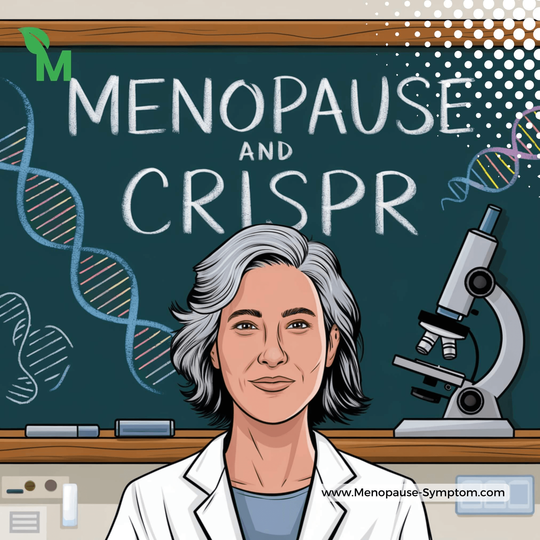
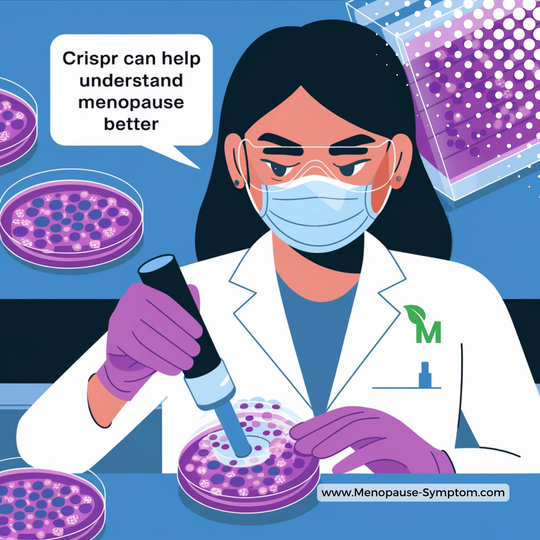
CRISPR and Menopause: Potential Applications
The application of CRISPR technology in menopause management is still in its infancy, but the potential is enormous. Here are some of the ways CRISPR could potentially revolutionize how we approach menopause:
1. Delaying the Onset of Menopause
One of the most exciting possibilities is the potential to delay the onset of menopause. By targeting genes associated with ovarian aging, researchers could potentially extend a woman's reproductive years. This could have far-reaching implications, not just for fertility but also for overall health, as the decline in estrogen associated with menopause is linked to various health issues.
2. Mitigating Menopausal Symptoms
CRISPR could potentially be used to modify genes responsible for the severity of menopausal symptoms. For example, by targeting genes involved in thermoregulation, it might be possible to reduce the frequency and intensity of hot flashes, one of the most troublesome symptoms of menopause.
3. Preserving Bone Density
Osteoporosis is a significant concern for postmenopausal women due to the loss of estrogen's protective effects on bone density. CRISPR technology could potentially be used to enhance genes responsible for bone formation or suppress those involved in bone resorption, helping to maintain stronger bones throughout the menopausal transition and beyond.
4. Maintaining Cognitive Function
Some women experience cognitive changes during menopause, often described as "brain fog." CRISPR could potentially be used to target genes involved in neuroprotection and cognitive function, helping to maintain mental clarity and potentially reducing the risk of age-related cognitive decline.
5. Personalizing Menopause Management
Perhaps one of the most promising aspects of CRISPR in menopause management is the potential for personalization. By analyzing an individual's genetic profile, it may be possible to tailor interventions to address each woman's specific needs and risks, creating a truly personalized approach to menopause management.
The Ethical Considerations: Navigating Uncharted Waters
While the potential benefits of using CRISPR in menopause management are exciting, it's crucial to address the ethical considerations that come with genetic modification. Some key points to consider include:
Safety concerns: As with any new medical technology, long-term safety must be thoroughly evaluated.
Access and equity: How can we ensure that these potential treatments are accessible to all women, not just those who can afford them?
Societal implications: How might delaying menopause impact societal norms around aging and fertility?
Consent and autonomy: How do we ensure that women have full autonomy in making decisions about genetic modifications?
These are complex questions that require careful consideration and ongoing dialogue between scientists, ethicists, policymakers, and the public.
The Road Ahead: Challenges and Opportunities
While the potential of CRISPR in menopause management is exciting, it's important to note that we are still in the early stages of this research. Many challenges lie ahead, including:
Technical Challenges
Delivery methods: Developing safe and effective ways to deliver CRISPR components to target cells in the body.
Off-target effects: Ensuring that genetic modifications only affect the intended genes without unintended consequences.
Long-term effects: Understanding the long-term implications of genetic modifications on overall health and well-being.
Regulatory Hurdles
The use of CRISPR in human applications is still a hotly debated topic. Regulatory bodies worldwide are grappling with how to oversee and regulate this powerful technology. It will likely take years of rigorous testing and evaluation before CRISPR-based treatments for menopause become available.
Public Perception and Acceptance
As with any new medical technology, public perception and acceptance will play a crucial role in the adoption of CRISPR-based treatments for menopause. Education and transparent communication about the benefits and risks will be essential.
The Promise of a New Era in Women's Health
Despite the challenges, the potential of CRISPR in menopause management represents a beacon of hope for millions of women worldwide. By offering the possibility of personalized, targeted interventions, CRISPR could fundamentally change how we approach this significant life transition.
Imagine a future where women can navigate menopause with fewer disruptive symptoms, maintain better overall health, and potentially even choose when to begin this transition. This is not about fighting against nature, but rather about giving women more control over their bodies and their health during a critical phase of life.
Empowering Women Through Knowledge and Choice
As we stand on the brink of this new frontier in women's health, it's crucial that women are at the forefront of these conversations. Understanding the potential of CRISPR in menopause management empowers women to make informed decisions about their health and to advocate for research that addresses their needs and concerns.
What Can You Do?
Stay informed: Keep up to date with the latest research on menopause and CRISPR technology.
Participate in research: Consider participating in clinical trials or research studies related to menopause management.
Advocate: Support policies and funding for women's health research, including studies on menopause and genetic technologies.
Engage in dialogue: Discuss these topics with your healthcare providers, friends, and family members to promote awareness and understanding.
Conclusion: A Future of Possibilities
The intersection of menopause and CRISPR technology represents a thrilling new frontier in women's health. While we are still in the early stages of this journey, the potential benefits are too significant to ignore. From potentially delaying the onset of menopause to mitigating its most troublesome symptoms, CRISPR could offer women unprecedented control over their menopausal experience.
As we move forward, it's crucial that we approach this technology with both optimism and caution. Rigorous scientific research, ethical considerations, and open dialogue will be essential in navigating this new terrain. By doing so, we can work towards a future where menopause is not something to be feared or endured, but a life stage that can be approached with confidence and optimism.
The future of menopause management is bright, and with continued research and development, CRISPR may play a pivotal role in shaping that future. As women, longtime users of healthcare services, and experts in our own experiences, we have the power to drive this research forward and ensure that it addresses our needs and concerns. Together, we can work towards a future where every woman can navigate menopause on her own terms, supported by the best that science and technology have to offer.
Source: Team MPS compiled, analyzed and wrote. Please dont reup without source of us. Many thanks.
Menopause and CRISPR: A New Frontier in Women's Health
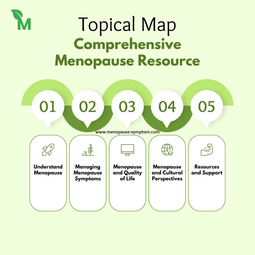
Topical Map For A Comprehensive Menopause Resource
Author name
10.10.2024

Topical Map For A Comprehensive Perimenopause Resource
Author name
10.10.2024
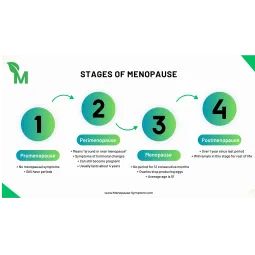
Understanding The Stages And Challenges Of Menopause
Author name
24.10.2024
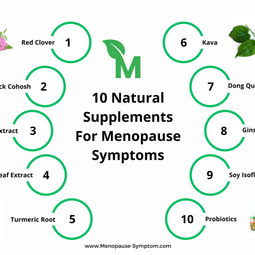
10 Natural Supplements For Menopause Symptoms
Author name
22.10.2024


